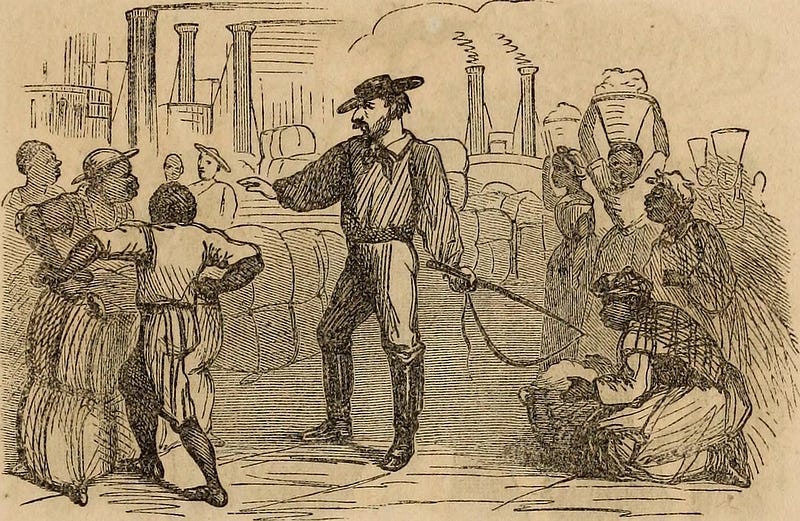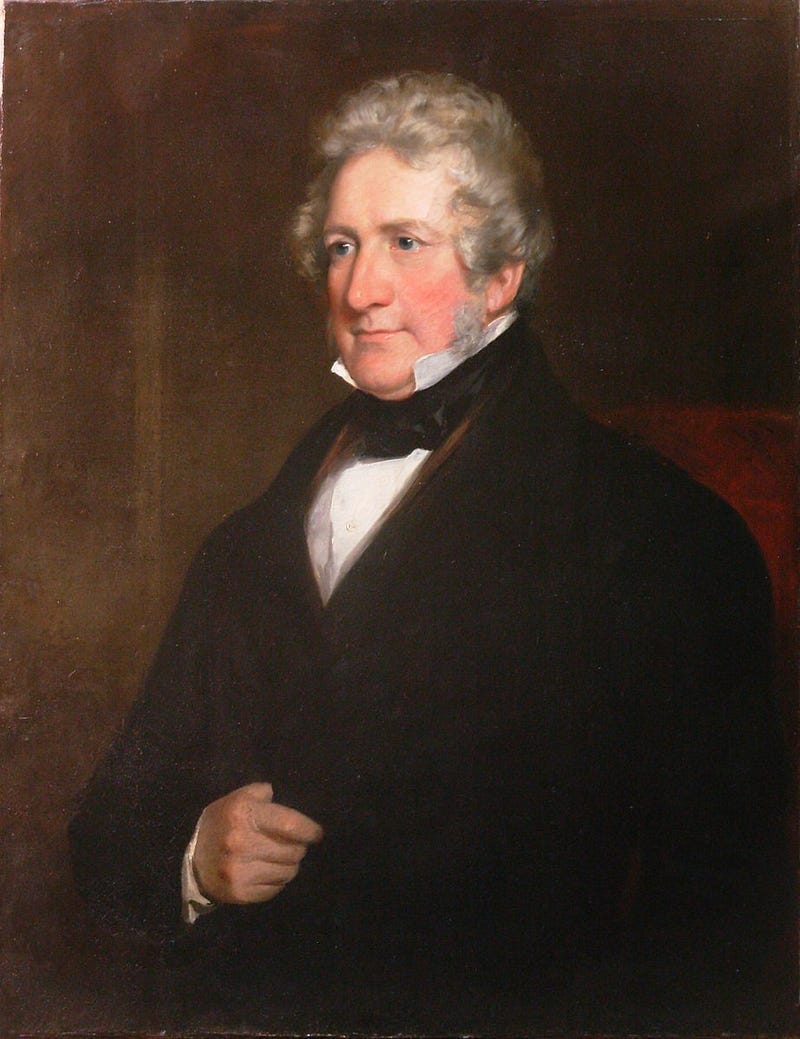Freedom: The Terrifying and Obscure Disease from the 1800s
When well intentioned professionals are capable of unknowingly harming many. A time when wanting to be free was a disease and a crime.
When well intentioned professionals are capable of unknowingly harming many. A time when wanting to be free was a disease and a crime.

A reputable doctor once argued that slaves’ desire for freedom was a mental disease. In 1851, Samuel Cartwright submitted a paper to Louisiana’s Medical Association describing this alleged disease: Drapetomania. Cartwright claimed that anatomical and physiological differences between black people and white people existed. These explained why black people ought to be enslaved. Therefore, he argued that black people’s desire for freedom was counter to their biology.
At that time, Americans debated about the emancipation of slaves and slave owners were outraged because many slaves were running away. The link between mental disease and the desire for freedom had been discussed since the 1820s (Myers, 2014). There were even court cases where slave owners demanded reimbursement if the previous owner knew the slave suffered from a mental illness (Myers, 2014). Cartwright thought that his medical expertise could help solve this problem. He wrote:
“With the advantage of proper medical advice, strictly followed, this troublesome practice of running away, that many negroes have, can be almost entirely prevented.”
Cartwright was a well respected doctor whose story we will tell in a future post. He made medical contributions which were and are still valuable. How should we make sense of a person who held such hideous beliefs, but also improved medical practice?
Cartwright’s Race Thinking
Cartwright argued that both nature and religion demonstrated that white people were inherently superior to black people. Therefore the idea that black people could think on their own would be a “violation of fundamental principle” according to historian Myers (2014). Cartwright thought that skin color was a “false issue” because the real and important differences were within bodies. For him, the science of comparative anatomy demonstrated that the “dark color not being confined to the skin, but pervading, to a certain extent, every membrane and muscle, tingling all the humors, and even the brain itself”.
Cartwright thought that this evidence, collected through physiological observations, meant black people were “knee benders”. He claimed:
“post mortem examinations of negroes, who have died of various diseases, and I have invariably found the darker color pervading the flesh and the membranes to be very evident in all those who died of acute diseases’’ (Cartwright, 1852).
Cartwright made an effort to utilize scientific concepts and tools as they arose to explore the nature of different kinds of people. He employed established medical knowledge and contemporary science to argue that white people were superior to black people. For Cartwright both divine revelation and the study of nature showed that white people were inherently superior to black people.
Cartwright also used the Bible to justify his claims. He analyzed different versions of the Bible and concluded that there were errors in how some words had been translated. He held that according to the Bible, black people existed before Adam and that they were created as “living creatures”. Cartwright said that it was a negro and not a snake who tricked Eve. This made black people synonymous with Satan. Lastly, the curse of Canaan which could also be translated as “self-submissive knee-bender” suggested that god intended black people to be enslaved (Myers, 2014).
Finally, Cartwright continued this work and saw himself following the footsteps of the founding fathers. He inherited a worldview that made it exceedingly hard to see black people as people. He took for granted that “that blacks were inferior, differently constituted and deserved no consideration or protection under the nation’s laws” (Myers, 2014). Even the abolitionists shared some of these ideas.
It is likely that Cartwright was being honest in his descriptions, that is, he genuinely thought he saw differences between black people and white people.
An Evil and Cruel Cure: the Whip
Cartwright prescribed whipping as a cure for drapetomania. He argued that slaves who wanted to run away from their master were sick. Karen E Quinones Miller wrote that Cartwright thought treating slaves humanely caused them to want to run away. Therefore, he urged slave owners to whip their slaves to cure them.

He thought that one of the biggest differences between white people and black people was their ability to provide oxygen to the blood. Cartwright called this process hematosis and claimed that it was an extension of Thomas Jefferson’s commentary on respiratory differences between the races. Cartwright claimed that black people had automatic hematosis which could only supply their blood with oxygen under physical labor. He argued that any problem with hematosis could result in disease. Therefore, he suggested a cure which sought to increase the action of the respiratory nerves. He encouraged whipping as the resulting blisters would do just that (Myers, 2014).
Whipping was meant to help lungs transpire.
Bob Myers, who wrote his PhD thesis on Drapetomania, wrote that “the beating of a slave to the point of blistering required extreme rationalization in order to serve the interests of whites who were determined to see their maliciousness toward blacks as beneficence” (Myers, 2014).
This is the same reasoning that justified making slaves work hard so that their muscles developed and they got sufficient oxygen. Supervised work was often seen as a likely cure and was often used in asylums at that time. Cartwright argued that black people needed to be worked (Myers, 2014). Cartwright wrote:
“His muscles not being exercised, the respiration is imperfect, and the blood is imperfectly vitalized. Torpidity of body and hebetude of mind are the effects thereof, which disappear under bodily labor, because that expands the lungs, vitalizes the blood, and wakes him up to a sense of pleasure and happiness unknown to him in the vegeto-animal or hibernating state”
In most cases the treatments prescribed to black people significantly differed from those prescribed to white people. For Cartwright this makes sense as he thought that they were so “physiologically different as to deserve different therapies” (Myers, 2014).
In short, Cartwright thought both nature and revelation demonstrated that black people should be enslaved. Using his authority as respected doctor, he provided slave masters with a rational sounding theory to justify them whipping black people.
Motivations and Reactions
While we find Cartwright’s views on race despicable and harmful; at the time he saw himself as a friend of the negro (Myers, 2014). According to his worldview, black people were better off when they were enslaved. He wrote, the “results of the emancipation of blacks in this country, and those in Jamaica, furnish no sort of encouragement” for the liberation of black people. Cartwright thought that freedom for blacks would be short lived and would end in either servitude (if they found a new master) or barbarism (if they did not find a new master). Cartwright argued that
“the Negroes in our northern cities, who are not domesticated in white families, are retrograding into barbarism” (Myers, 2014).
Some thinkers welcomed Cartwright’s writings whereas others had deep disagreements. Drapetomania got mixed reviews and some Northern journals dismissed his theory. Most of the criticism came from people living in Northern states which were States where slaves had been or were being emancipated. However, even those who advocated for emancipating black people had reservations about sharing “white spaces” with them.

In 1816 William Wilberforce, a leader of the abolitionist movement, organized a public dinner for the African and Asian societies but he requested that Africans and Asians sit at the other end of the room and behind a screen to dine (Myers, 2014). This demonstrates the pervasiveness of racist views at the time and the fact that many abolitionists shared Cartwright’s assumptions.
Conclusions
Cartwright made important contributions to medicine such as the use of population based statistics and the spirometer (a device used to measure lung capacity). Historical figures are often difficult to understand because they constructed their words in ways that are unrecognizable to us. Cartwright was a reputed doctor who made valuable contributions to medicine (by our modern standards) and who also held despicable racist views which undoubtedly increased human suffering.
Cartwright’s story is important because when he is studied in the context where he practiced, “one discovers that his thinking reflected the standard legal and medical theories” of the 18th and 19th centuries (Myers, 2014). The concepts Cartwright used “were rooted firmly in the Enlightenment tradition of rational humanism” (Myers, 2014). This episode helps us understand that time in history.
It is key to stress that Cartwright appears to believe that real differences existed between white people and other races. There are no indications in the literature that he falsified his findings or that he lied about what he perceived. The shocking point is worth emphasizing: his previously held assumptions dramatically shaped how he interpreted the evidence he collected. Some eighty years later another renowned doctor would start poking through eyeballs with ice-picks to treat mental disease.
The lesson is clear: capable and well intentioned professionals are capable of unwittingly harming many. How to prevent such tragedies is another matter.
Authors: Christian Orlic & Lucas Heili
The authors understand that some of the language used by Cartwright is hurtful. We carefully decided to include this language to exemplify what Cartwright and his contemporaries believed. The terminology they used is an important part of how they categorized and understood their world.
Unless otherwise stated, all quotations attributed to Cartwright come from Myers (2014).
We would like to thank Karen E Quinones Miller and Criminal Matters for writing on this important matter. We have also heavily drawn from the work of Myers. We have endeavour to accurate represent the views of those we cited.
References
Crime Maters. 2023. Mental Illness Caused Slaves to Escape to Freedom, According to One Doctor. Medium Jan 3, 2023. https://medium.com/@criminalmatters/mental-illness-caused-slaves-to-escape-to-freedom-according-to-one-doctor-96ca77d1b376 Accessed March 20, 2023.
Quinones MIller. K.E. 2019. Runaway Slaves Suffered From a Mental Disease. Medium. November 16, 2019. https://medium.com/@authorkeqm/runaways-slaves-suffered-from-mental-disease-e1375f767fb1 Accessed March 20, 2023.
Myers, B.E. II. 2014. Drapetomania: Rebellion, Defiance, and Free Black Insanity in Antebellum United States. UCLA PhD Dissertation. https://escholarship.org/content/qt9dc055h5/qt9dc055h5_noSplash_1875a9a9f688f6f49c3222c6ecee4b42.pdf Accessed March 24, 2023.




